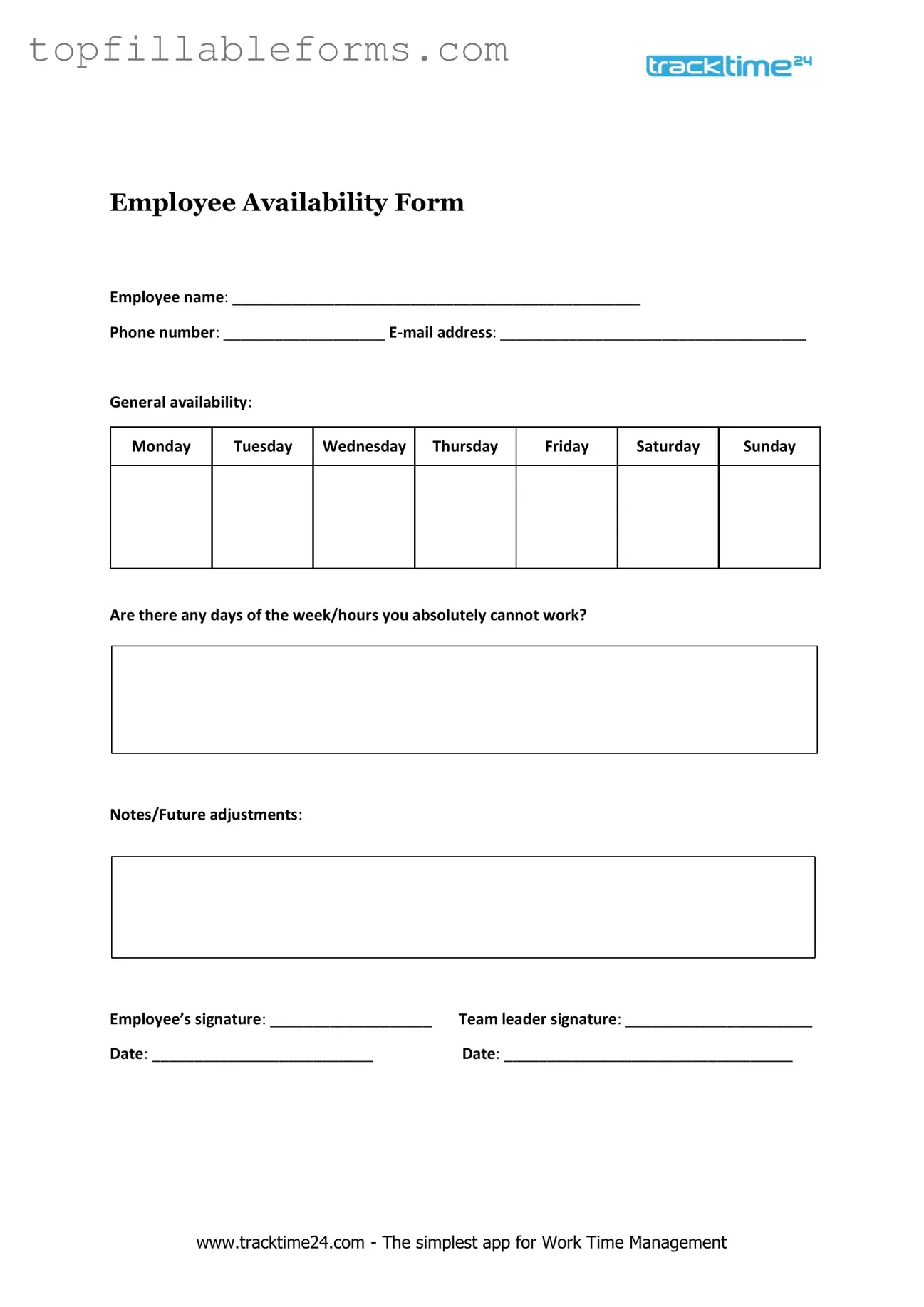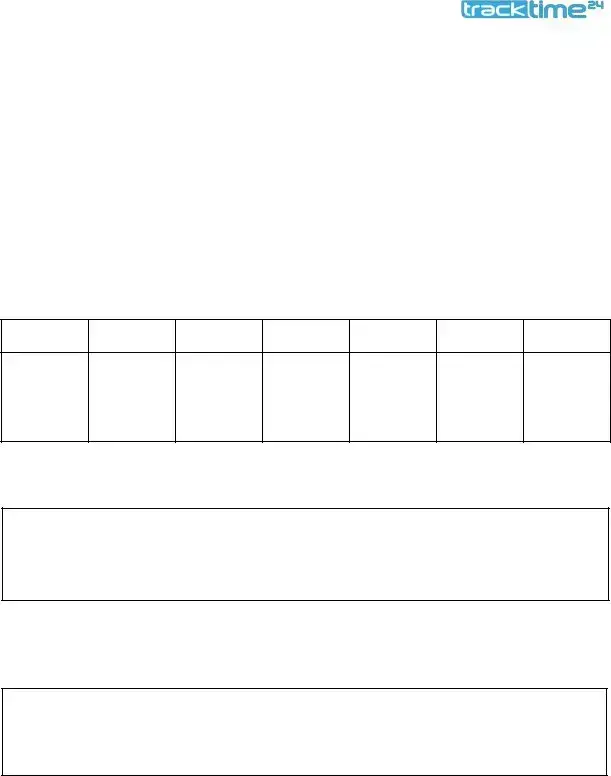Printable Employee Availability Form in PDF
The Employee Availability form is a document that allows employees to communicate their preferred work hours and availability to their employer. This form plays a crucial role in scheduling, ensuring that both the needs of the business and the preferences of the employees are considered. By clearly outlining availability, the form helps to foster a more efficient and harmonious workplace environment.
Open Employee Availability Editor Here

